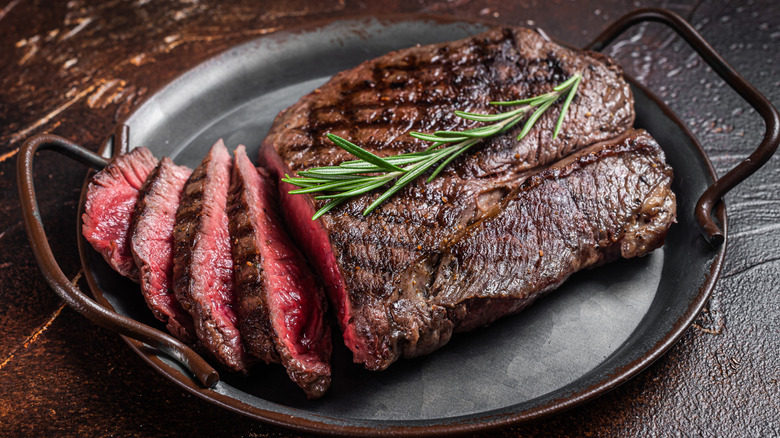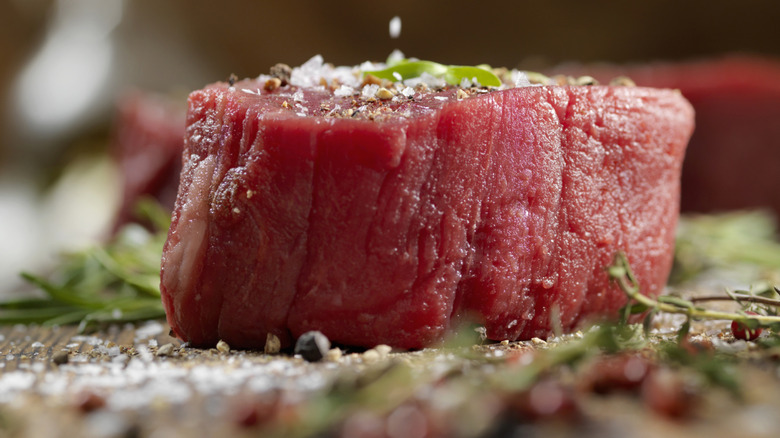The Cut Of Steak You Actually Shouldn't Cook Medium-Rare
We may receive a commission on purchases made from links.
While most chefs and butchers agree that fine cuts of steak shouldn't be cooked to well-done, even medium-rare is too done for some cuts. Tasting Table talked to steak expert Nicole Brisson, executive chef and partner of Brezza and Bar Zazu, who shared her opinion on the cut of steak you shouldn't cook medium-rare.
"A filet that is very lean with little to no marbleization I would recommend more on the rare side," stated chef Brisson. Marbling is the white streaks of fat that run through cuts of steak and is equated with juiciness and optimal flavor. The fat renders as it cooks, keeping the steak moist while also imparting richness that amplifies the meat's umami profile. Leaner cuts lack the marbling necessary to keep the steak moist for as long as it takes to cook it medium rare. So reduced cooking times keep lean cuts tender. If they dry out, they may become unpleasantly tough and lose flavor. And there are plenty of flavorful lean cuts of steak.
The three leanest cuts of steak are eye of round, lean top round steak, and sirloin tip side steak, but the absolute best cut of steak if you prefer leaner meat is top sirloin. Whether you grill, pan-fry, sear, or broil it, a rare steak should have an internal temperature of between 120 and 125 degrees Fahrenheit. Use a meat thermometer to know precisely when your rare steak is ready. If you don't have one, they're readily available online; this Biison ultrafast digital thermometer with a long probe costs around $16.
Cooking lean steaks: Best practices
While there are many methods for cooking a rare steak, lean steaks benefit from a few preparation and cooking tips to ensure the juiciest, most tender texture. To tenderize a lean cut of steak, there are a few things you can do. The first is a simple salt brine, which involves coating raw steak in sea salt and letting it sit overnight. Sea salt is preferble to table salt for the flavor. Even adding a good amount of salt minutes before cooking the steak will help. Scoring steak by making shallow cuts in perpendicular lines across the surface is another helpful method that works by cutting through the meat fibers and so tenderizing it that way. We also recommend the surprisingly effective use of baking soda to tenderize meat by rubbing it into the raw steak and letting it sit for between 3 and 24 hours.
Certain cooking methods will benefit the texture and flavor of a rare lean steak. A good pan matters: Searing the steak in a cast iron skillet for just a few minutes on each side over high heat will create a crisp crust to contrast the tender, juicy center. A reverse sear (which means searing it hot and fast after cooking at a lower temperature) will give you even more control over the rate of doneness. It's a fast way to achieve a rare, juicy, lean steak. Finally, letting your steak rest after you pull it out of the pan or off the grill contributes to great taste and tenderness.

